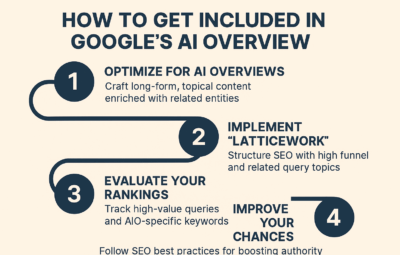Unlock the Secrets of Search Engine Suggestion Optimization: Harnessing User Intent for Stellar SEO
- February 9, 2024
- Business Marketing
Welcome to the game-changing world of Search Engine Suggestion Optimization (SESO)! Picture this: every time you type a query into that search bar, you’re not just tossing in words – you’re transmitting your intentions, hopes, and needs. Understanding user intent isn’t just a fancy term; it’s the backbone of your digital quest for visibility and connection.
So, let’s decode this puzzle together. We’ll dive deep into the nexus between the intent behind every search and the crafty suggestions that search engines nudge your way. With spotlight-stealing case studies, we’re going to unravel just how these hidden forces shape search results and direct the digital traffic.
Whether you’re an SEO savvy marketer or a curious content creator, squeezing every ounce of potential from SESO starts here. Get ready to tune in to your audience’s wavelength like never before – it’s time to revolutionize your online presence!
Mastering Keyword Research Strategies in the Era of Suggestions
Now that search engines have evolved to provide intuitive suggestions as users type their queries, it’s crucial to keep our keyword research game a step ahead. Let’s dive into what this means for SEO professionals and how to leverage it for maximum impact.
Traditional Keyword Research vs. Suggestion-Influenced Keyword Research
In traditional keyword research, our focus was primarily on search volume and competition. However, with search engine suggestions, we need to understand what users are seeing as they type their searches. This slight shift takes into account the predictive searches that populate and influence user behavior.
Innovating Keyword Research Tactics for Better Suggestions
It’s time to innovate our approach. Adapting to the suggestion landscape means leveraging new metrics and considering the intent behind queries. Strive to predict what your audience will type next and how you can align your content with these predictions to appear in the suggestions.
Tools and Techniques for SEO Professionals
Leading the charge with optimized research methods requires a robust toolkit. Employ platforms like AHREFs, SEMrush, or Google’s Keyword Planner to uncover new keyword trends and opportunities. Pair these with a clear strategy aimed at capturing suggested search territory, and you’re on your way to search suggestion success. Maintain agility with the following techniques:
- Look Beyond Volume: Prioritize relevance and intent over sheer search volume.
- Study Search Patterns: Analyze autocomplete phrases and related searches to understand user behavior.
- Keyword Clustering: Group semantically related keywords together to strengthen topic authority.
- Use Predictive Analytics: Apply tools with predictive capabilities to stay a step ahead of the trend curve.
Remember, mastering keyword research in this era isn’t just about finding words; it’s about forging a connection between user intent, search engine behavior, and your content’s discoverability.
Capitalizing on Long-Tail Keywords for Enhanced Search Suggestions
Long-tail keywords are often the unsung heroes of SEO and search suggestions. These multi-word phrases tend to be more specific, less competitive, and highly targeted towards user intent. By focusing on long-tail keywords, you can potentially improve how your content aligns with what users are typing into their search bars. Let’s dive into how you can leverage the power of long-tail keywords to boost your presence in search engine suggestions.
The Power of Long-Tail Keywords in Modern SEO
Long-tail keywords play a crucial role in modern SEO for several reasons. Firstly, they reflect the way real people talk and search for information online. As voice search becomes more prevalent, conversational phrases are rising in importance. Moreover, these keywords often have a higher conversion rate because they cater to users who are further along in the buying cycle and know exactly what they’re looking for.
How Long-Tail Keywords Influence Search Engine Suggestions
Search engines are designed to predict and suggest search queries that users are likely to type next. When you optimize content for long-tail keywords, you are aligning with specific queries that users might enter. This increases the chance that search engines will suggest your content as a top choice, effectively putting you right in the line of sight of your target audience.
Tips for Finding and Integrating Long-Tail Keywords
- Use keyword research tools: Start by using SEO tools to find long-tail variations of your primary keywords. These tools typically provide information on search volume, competition level, and relevance.
- Analyze search queries: Look at the queries bringing traffic to your site to identify long-tail keywords that you can include in your content.
- Consider user questions: Think about the questions users might have related to your topic. Answering these questions in your content can help capture relevant long-tail traffic.
- Integrate naturally into content: Once you have your list of long-tail keywords, incorporate them into your content naturally. Don’t overstuff; instead, use them in a way that maintains the flow and readability of your text.
- Monitor and adjust: Keep an eye on your analytics to see how well your long-tail keyword-optimized content performs, and make adjustments as needed.
Embracing long-tail keywords can significantly impact your visibility in search engine suggestions. By understanding and implementing strategies around these keywords, you set the stage for a more targeted and effective SEO approach.
Decoding Search Engine Autosuggest Algorithms
We’ve all experienced it: start typing in a search query and like magic, a list of suggestions appears, predicting what you might be looking for. It feels like reading your mind, doesn’t it? But it’s not magic; it’s the power of autosuggest algorithms at work. Let’s unzip the black box and peek inside to understand how these digital oracles forecast our search intentions.
How Autosuggest Algorithms Work
The process might seem instantaneous, but there’s a lot going on under the hood. Search engines utilize a complex mix of historical data, user search patterns, and even your very own typing history to generate those suggestions. They consider the popularity of certain terms, how often they’re searched, and sometimes the user’s geographical location. By analyzing this data, they aim to save you time and effort in your search quest.
Impact on Content Visibility and Suggestion Relevance
What does this mean for your content? Well, if you’re savvy about it, autosuggest algorithms could become your best ally. Appearing in these suggestions can increase your content’s visibility exponentially. It’s like getting a VIP pass in the search engine arena, putting you right in front of potential visitors before they even finish typing their query.
Adapting SEO Strategies to Align with Autosuggest Algorithms
It’s time to adapt or be left behind. Tweaking your SEO strategies to play nice with autosuggest algorithms means understanding and adjusting to what influences these predictions. Opt for more natural language queries and consider the context of your keywords. Remember, the search game has evolved; ensure your playbook is up-to-date.
- User Engagement: Predictive searches promote higher engagement, as users are more likely to click on suggestions that seem tailor-made for them.
- Data-Driven Insights: Use them to understand what people are searching for in relation to your niche and adjust your content accordingly.
- Continuous Optimization: Search behaviors change, and so do algorithms. Keep testing and refining your methods.
Unlocking the secrets of autosuggest algorithms is like finding a map to hidden treasure. By better understanding the workings behind the digital curtain, you can position your content in the spotlight, giving the audience exactly what they’re looking for before they even ask for it.
Optimizing Content for Predictive Search: An SEO Advantage
In the ever-changing landscape of SEO, staying ahead of the curve means recognizing the power of predictive search. This feature isn’t just a cool tech trick; it’s a cornerstone of modern search behavior. Let’s dive into how you can fine-tune your content to not just coexist with predictive search but to leverage it to its full potential for an undeniable SEO edge.
Strategies to Make Your Site Content Predictive Search-Friendly
To get you started, here are actionable strategies that can help your content become the first suggestion on the search list:
- Focus on user-centric content that mirrors natural language queries.
- Use semantic keyword clustering in your posts to cover a wide range of related terms.
- Ensure your content provides direct answers to user queries for featured snippet consideration.
- Regularly update your content to keep it current and authoritative, signaling its value to search engines.
Leveraging Predictive Search for SEO
Think of predictive search as your ally in understanding what your target audience wants before they fully articulate it. Here’s how to take advantage of this feature:
- Conduct thorough keyword research to include phrases that are starting to trend.
- Consider voice search patterns since predictive search is often a stepping stone to a voice command.
- Examine your site’s search data for insights into what your users expect to find on your pages.
Content Creation Best Practices for Predictive Search Optimization
Armed with knowledge and strategy, creating content for predictive search optimization can help you gain visibility. Remember these best practices:
- Create clear, concise titles and headers that align with search queries.
- Write compelling meta descriptions, tempting users to click through as suggested content appears.
- Infuse your content with contextual keywords that tie back to the user’s intent.
- Deploy structured data to help search engines crawl and display your content effectively.
Levelling Up with Voice Search Optimization
As we dive deeper into the digital era, the way users interact with search engines is rapidly evolving. Voice search has become a game-changer, making it crucial for SEO strategies to adapt. Let’s explore what it takes to give your SEO a voice.
Understanding the Rise of Voice Search
With the increased use of digital assistants, like Siri and Alexa, voice searches are on the rise. It’s not just about convenience; it’s about how natural it feels to simply ask a question and receive an answer. To stay relevant, businesses need to understand this shift and optimize for voice-based queries.
Essential Voice Search Optimization Techniques for SEO
- Use natural, conversational language in your content to match how people speak.
- Focus on question-based queries as voice searches are typically phrased as questions.
- Implement structured data to help search engines understand and categorize your content effectively.
Preparing Content for Voice Search Queries
Creating content that answers direct questions can give you an edge in voice search optimization. Think about the potential questions your audience might ask and craft your content to provide clear, concise answers. With a bit of foresight, your content can be the voice that guides users to the answers they seek.
Leveraging Machine Learning and AI in Search Suggestions
As we ride the crest of the digital age, machine learning and artificial intelligence (AI) are revolutionizing how search engines understand and predict our every query. If you’ve ever marveled at how accurately a search engine suggests the term you were about to type, you’ve witnessed these technologies in action. But how can we, as SEO-savvy individuals, harness this power for Search Engine Suggestion Optimization? Let’s dive in!
The Evolving Role of Machine Learning and AI in SEO Suggestions
The integration of AI and machine learning into search engines is not just fancy tech-speak; it’s a critical evolution influencing how search suggestions evolve. By analyzing vast datasets and previous search queries, they are able to predict user behavior almost telepathically. Understanding this can give you the upper hand in establishing your content’s presence at the forefront of search suggestions.
How to Optimize for AI-Powered Search Engines
Optimizing for search suggestions powered by AI doesn’t require an advanced degree in robotics. Start simple—focus on creating content that resonates with human experience and context. Then, ensure that your content matches a variety of search intents. AI algorithms prioritize content that serves the user’s purpose, so be sure your website ticks those boxes.
Anticipating Future Trends in Machine Learning and SEO Suggestion Integration
Staying ahead of the game means not just understanding current trends but anticipating future ones. We might not have a crystal ball, but we can make educated predictions. AI and machine learning are only going to get more sophisticated, so expect future search engines to offer even more nuanced suggestions. Start by analyzing current user behavior and tweaking your SEO strategies accordingly to stay a step ahead.
- Embrace the fact that machine learning and AI algorithms are consistently learning; your SEO strategies should be, too.
- Be prepared for algorithms to start considering not just keywords, but the underlying contexts and themes of content.
- Keep an eye out for SEO tools that incorporate machine learning insights to fine-tune your approach to search suggestion optimization.
Boosting Your Search Suggest Game: Amp Up That CTR!
Ready to see your click-through rates soar with savvy search suggestion strategies? Let’s dive in and check out some top-notch techniques that’ll make internet surfers simply unable to resist clicking through to your content.
Crafting Click-Worthy Suggestion Snippets
First impressions matter. When users glance at search suggestions, your snippet needs to stand out. Be concise, be compelling, and make sure to include the keyword naturally:
- Keep it descriptive but brief.
- Invoke curiosity without giving everything away.
- Highlight what makes your content unique.
Using Search Suggestions to Boost CTR
Search suggestions aren’t just there for looks—they’re an opportunity. How? Use them to preview the value you’re offering. People click on what helps them, informs them, or excites them. Be the solution they seek and make it clear in those suggestions.
A/B Testing for Suggestion Snippet Optimization
Guesswork isn’t good enough. Want to really zoom in on what works? Test it. Create different versions of your search suggestion snippets:
- Test different lengths, tones, and keyword placements.
- Analyze the click-through performance of each variant.
- Refine your approach based on real data, not hunches.
A/B testing can turn a good snippet into a great one—so start experimenting and watch your CTR climb!
Hyper-Personalization in Search Queries: A SEO Game Changer
Have you noticed the search engines seeming to read your mind? That’s hyper-personalization at work, and it’s taking SEO to new frontiers. Let’s break down why this is such a pivotal shift.
The Significance of Personalization in Search Queries
In the digital space, experiences tailored to individual users are no longer a luxury—they’re expected. Search engines are increasingly using personalization to deliver more relevant results, which can dramatically impact visibility. This means understanding your audience has never been more crucial.
Adapting to Personalized Search Suggestion Algorithms
To stay ahead of the game, SEO strategies must evolve to align with how personalized search suggestion algorithms function. This involves not just targeting keywords, but designing content that aligns with the user’s search context and history.
Ethical Considerations and User Privacy
While hyper-personalization can drive SEO success, it also raises questions about user privacy. Balancing effective SEO practices with ethical considerations about how data is collected and used is essential for maintaining trust and credibility in your brand.
- Ensuring transparency in data usage
- Complying with privacy laws and regulations
- Building content that respects user boundaries
Conquer the Local Scene with Smart SEO Tactics
Tapping into the local market can have a tremendous impact on your business. Local search engine suggestions play a crucial role in getting your business seen by potential customers in your vicinity. By mastering Local SEO, you’ll ensure that your business stands out in local searches and suggestions.
Unveiling the Importance of Local SEO in Suggestions
Local SEO is not just about appearing on maps and search listings; it’s about being the top suggestion when users are looking for services or products in your area. With tailored local SEO strategies, you can have a significant influence on the suggestions search engines provide to users.
Tactics to Dominate Local Search Suggestions
- Claim your Google My Business (GMB) listing: Ensure your information is accurate, comprehensive, and updated regularly.
- Gather authentic reviews: Encourage satisfied customers to leave positive reviews about their experience. More positive reviews can improve your likelihood of showing up in local search suggestions.
- Local keyword optimization: Include city or region-specific keywords in your website’s metadata, headers, and content to enhance local search visibility.
Combining Local Keywords with Effective SEO Practices
Integrating local keywords with proven SEO practices is the secret sauce for dominating local search suggestions. Use local slang and references known to your community to resonate with the local audience. Combine this approach with strong SEO fundamentals, such as quality content and robust backlinks, to increase your visibility in local search engine suggestions.
About us and this blog
We are a digital marketing company with a focus on helping our customers achieve great results across several key areas.
Request a free quote
We offer professional SEO services that help websites increase their organic search score drastically in order to compete for the highest rankings even when it comes to highly competitive keywords.
Recent Posts
View all projectsMore from our blog
See all postsRecent Posts
- How to Promote Last-Minute Black Friday Deals with SEO, AIO Search Fast With Online Advantages November 21, 2025
- The AI Overview Detective: How to Confirm Your Featured Status September 10, 2025
- Google Ads: Take Back Control of Your Online Experience September 10, 2025
















